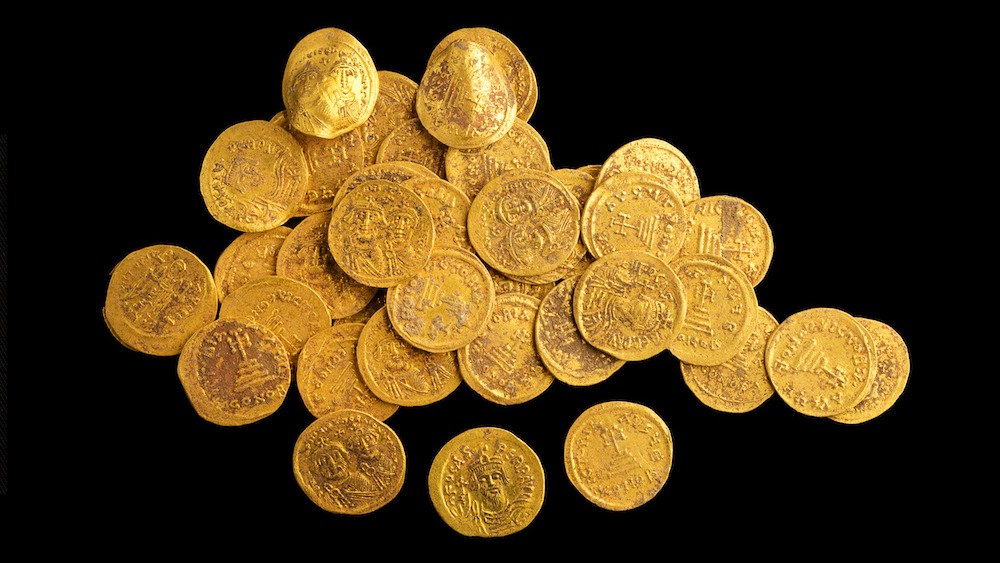
There are 44 Byzantine gold coins and other valuables found in Israel.
The Byzantine Empire produced coins during the reign of Emperor Heraclius. The gold solidus coins were a common currency during the Byzantine era. The latest coins in the cache were dated to the time when the Muslim conquest of Byzantine Palestine took place.
The Byzantine Emperor Heraclius is the subject of most of the coins. In his early years as emperor, only his portrait was depicted on the coin, but after a short time, the images of his sons also appeared. One can follow his sons growing up until they look the same as their dad, who has a long beard.
There is a rare Byzantine coin that shows a supernova explosion.
RECOMMENDED VIDEOS FOR YOU...
The site of the ancient city of Banias, also known as Paneas or Panias, was once used as a cultic site to Pan, a Greek god of fertility. According to the statement, Christians believe the site where Peter proclaimed Jesus to be the Christ is there.
The base of a stone wall is believed to have been left by someone who fled during the Muslim conquest.
Yoav Lerer, excavation director for the IAA, said in the statement that the discovery reflected a specific moment in time, when the owner hid his fortune in the threat of war, hoping to return one day to get his property. We know that he was not as lucky.
Researchers found building ruins, water channels and pipes, a kiln for making pottery, and fragments of pottery, glass and metal artifacts.
The economy of the city of Banias, which was ruled by the Byzantines for 40 years, may be revealed by the coin find.